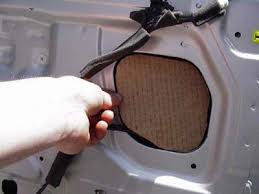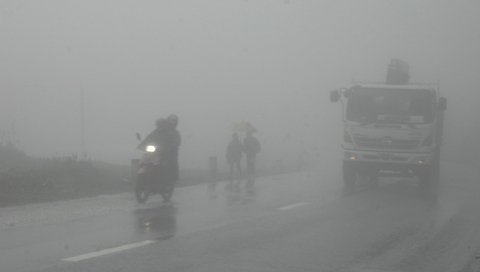Unique way to prepare love yeast in Ban Pho wine
For a long time, people in the lowlands, when going to the Northwest, have still passed on the story: "Going to Bac Ha and Lao Cai without sitting at the corner of the market or looking into the "headquarters" If you sip a cup of Ban Pho corn wine, you haven't arrived in Bac Ha yet.
Ban Pho corn wine is sold at Bac Ha market, Lao Cai
Drinks are not expensive, sometimes it's just a small bowl of Thang Co, people can sit together all day. But what is worth mentioning is that the unique Ban Pho wine yeast captivates the taste buds of many people with more than just a simple mixing recipe. Ban Pho people share that: Without a special climate, combining the water source of Hang De spring and the love of Ban Pho people, it would be difficult to have the kind of yeast that fascinates people.
Go to the market to drink wine
Every time I have the opportunity to go to a highland market, I consider myself to have achieved something interesting. That excitement comes not only from ethnic dresses of all kinds and colors, not only from items only found in the highlands, specialized items for people who go to the forest for long periods of time... but that excitement lies right there. in the villagers' choice of reasons for going to the market. Unlike going to the market down low, most people's purpose is to buy and sell. If necessary, they "stick their legs out" to the market. For busy people, going to the market is a problem. Sometimes, they go to the market one day to buy food to put in the refrigerator to use for the whole week.
But that's not the case with highland people. Villagers go to the market to buy joy and sell smiles. Every week there are only one or two days of the market, called the market session. They eagerly look forward to going to the market not simply to exchange goods but importantly to interact and meet with many people. Therefore, when coming to the highlands, no one should be surprised when asking about a person living at the beginning of the district and a person living at the end of the district knows about 100, especially men. Partly because the population is sparse, they meet each other once at every market, partly because the men always have social connections through drinking parties... forgetting about life. That is also the main purpose of most village men going to the market. They go to the market just to drink until they get drunk, then go home!
As a working girl, sometimes I feel at a disadvantage. Especially when working in the highlands because my alcohol tolerance is too modest. Exploring the highlands of Vietnam without knowing how to drink alcohol is considered not understanding every stream, every forest edge, every unique way of life behind every stilt house that seems very simple and charming. My journey back to Bac Ha this time was a blessing as I encountered magical connections. Through a friend, I learned about Giang A Co, a native of Ban Pho, the son of a family with a tradition of making corn wine for many years. Cu said: "When I grew up, the village had established the profession of making wine. Making wine at home, Ban Pho people also thanks to the secret of making traditional corn wine and selling it to all regions to improve their livelihoods like today. The corn growing area in Ban Pho is probably the largest in the district".
The secret of human love in alcohol
The excuse led us around the village and then back to our house. Mr. Giang A Suu, Co's father, who is over 70 years old, confides in a low voice, showing affection for the girls of the lowlands: "The Mong people have come to Ban Pho to live for nearly 300 years, so the wine making profession has been born for that many years" . At the age of 10, Mr. Suu knew how to distill wine yeast to perfection. Now you can do it with your eyes closed. Also through Mr. Suu's words, I learned: Any corn can be used to make wine, but if you want to have true Ban Pho corn wine, every step must be complete and up to the standards. Corn is not the normal corn grown widely throughout the mountains and valleys, but it is the yellow corn variety of the Mong people, grown on high, remote rocky mountains. This type of corn has a very low yield, but the grains are soft, fleshy and rich in nutrients. After harvesting, corn is stored in a way to gradually make wine. Corn in Lung Phinh commune, Bac Ha is always the number one choice of Ban Pho people when making wine.

To make good corn wine, it must converge all four elements: Yeast, spring water, climate and human love
Farmers harrow the fields to a certain level, then sow Hong My seeds, wait for them to grow like young seedlings, then uproot them, plant them among corn and rice fields, fertilize them, and wait for the harvest. Mong people will cut Hong My at home, dry it and store it in the kitchen or roof. Hong My seeds are tiny, black in color, ground like powder, then mixed with the first liquid of wine and boiling water, kneaded until smooth. After that, the yeast is molded into round eggs like eggs and placed on dry straw, dried in a place with little sunlight until the yeast dries and turns white to look like dumplings, then stored for later use. . Also through Mr. Suu's experience, the yeast used to make Ban Pho corn wine is made from a plant called Hong My. It is the decisive factor for the passionate, seductive, neither harsh nor sour flavor of the Ban Pho wine brand. This is a plant that has millet seeds, but is grown like rice. The sowing season is in March, the harvesting season is in September and October.
When making wine, the corn on the kitchen floor is taken down, the kernels are removed, flat kernels, rotten kernels, and mold are removed. Using low heat, simmer evenly, and boil the corn for exactly 24 hours. When the corn kernels begin to burst, ferment them. Yeast-unpacked corn must be covered for a week, otherwise, it will be damaged when making wine. In particular, corn must be fermented on a clean cement floor right inside the house for it to be good. The corn compost pile should not be too hot or too cold. If it's cold, the brewer will have to warm up the pile of fermented corn. When the corn kernels have white powder, they continue to be incubated in a large plastic container. After about a week, they can be put into the pot to make wine.
The stove to cook corn must keep the fire even. The cooking pot must be tightly sealed to prevent odors from escaping. After boiling for two hours, drops of wine will begin to drip down, through a tube or trough designed to connect to the pot. Just like that, each batch of about 60kg of corn will cook 25 - 30 liters of 40 - 45 degree wine.
(ST)









